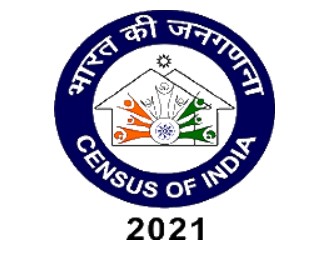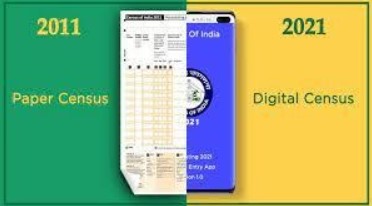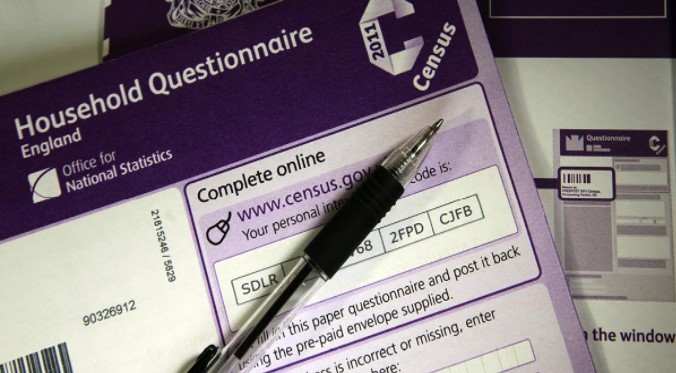The Census in India is a decadal event and it is done to record and enumerate India’s population. It had begun in the year 1872 under the British Viceroy Lord Mayo. The first complete Census happened in India in the year 1881. The 2021 Census of India will be the 16th Census to happen. After the independence of the country, The Census of India Act was passed in the year 1948 and the Census is now conducted by the Registrar General and Census Commissioner of India under the Ministry of Home Affairs, Government of India.

This 2021 Census will be different from all its predecessors for a variety of reasons. The Coronavirus Pandemic will and has affected the data collection and it is highly unlikely that the Census results will be released on time. Another reason for it being different is that this Census would be a digital one.
In the year 2019, it was announced by the Central government that the entire process of collecting and collating Census data would be made completely digital through an Android – based mobile app. The process of collecting data through this app would be free from the use of traditional pen and paper. It would be the first digital Census of India in its history of 140 years and it is apparently a step towards making ‘Digital India’.

The people of the country would be able to upload their details on a mobile app on their own or through the help of enumerators. The Census mobile app will be available in 16 Indian languages so that all the citizens across the county can easily update their details digitally in their own language. It would be the world’s largest exercise of its kind. The data that will be thus collected digitally will be much faster and it is estimated that it would be available by 2023-24 even after the delays that happened because of the pandemic. It would be provisional data though and it will take another year to release the final report. We know that if the data collected will be available in the digital form, it could be used more effectively for public welfare as a more multi-dimensional analysis of the data would be possible.

The Census of 2021 is supposed to happen in 2 phases. The first phase is the house listing and housing census. In this phase, the app will have a questionnaire on house listing, housing status, access to LPG and PNG connection, availability of Internet in the household, possession of devices like laptops, television, smartphones, etc. by the family members and the NPR. During the COVID pandemic, we saw the importance of the Internet and phones. Today they have become a necessity.
For the second phase which is the population enumeration, another app called ‘Census 2021 – HouseHold’ has been developed to collect the Population Enumeration Data by canvassing the Household eForm, door to door, by the enumerator. This is to be used by the Official nominated by the State Government /Government of India to perform the Census operation. During this phase, census work on demography, religion, SC and ST population, language, literacy, economic activity, migration, and fertility will also be carried out. This phase will also have the facility of online self-enumeration by the public. This phase of the census work was supposed to be carried out from April 2020 to September 2020, but it could not be done due to the pandemic.

The people will themselves be primarily responsible for putting in the data so there will be minimization in the role of the intermediary, i.e., the people collecting the data in the second phase. Their role though cannot be totally negated as a lot of people in the country who are old, uneducated, technologically challenged or so poor that they cannot afford a mobile phone would not themselves be able to put in their data and information. We will still require the help of these intermediaries. Usually, this responsibility is given to the government teachers and they are paid minimally. Almost 33 lakh teachers would be trained as enumerators by the government on how to use the app for collecting data.
Another major point is that when the government decided on creating this mobile app and holding the census digitally, it was seen as a step that will bring a ‘big revolution’ and will be an exercise of ‘Jan Bhagidari’ (When the citizens of the country contribute). This app now will actually come in handy and will become a boon because of the limitations in interactions and movements there are due to COVID. A lot of people will be able to put in their information without the need or help of any intermediary or enumerator.
This method also has its own challenges though. In a country like ours where a lot of people do not have access to the internet and smartphones, it is very difficult to be sure that every citizen will be capable enough to use the mobile app in putting in their data. This will lead to poor, illiterate people and people with no access to technology getting deprived of the advantages of the Public Distribution System and these people ironically are the ones who need it the most. It will be a classic case of the digital divide in a country like ours. For these people, the government has decided to take the help of the intermediaries. Their role will be minimized for sure, but can’t be completely done away with.

Let us now talk about the institution of the Census itself. As mentioned above, data is collected after every 10 years but the recent catastrophe that the whole world is witnessing shows that it is not collected frequently enough. There has been a steep decline in the quality and accuracy of data. The growing delays in the release of data even after technological innovations show the lethargy of the system. The use of the census data in delimitation and federal redistribution has been questioned on the grounds of poor quality. We know that the last census that happened was in the year 2011 and the next one is scheduled to take place in 2021. India being a rapidly developing country, its population is estimated to have risen roughly by 160 million since the last time that the census happened in 2011. This rise in the population has definitely changed the face of the Indian subcontinent and its people. In the time of emergencies and calamities, our government relies heavily on this data.During this Covid Pandemic, this problem became even more pronounced. With a lot of people getting affected by the disease, migrants leaving for their abode, and now the drive for vaccination, the lack of accurate data will and has created problems. Many poor migrant labourers and even ordinary Indian citizens have been deprived of their share of government facilities and amenities because of this old and now wrong data. According to the new data and researches more than ten crore Indian people could not take advantage of the Public Distribution System. Almost all the daily wage labourers and their family members depend on this Public Distribution System for their sustenance and life. This global pandemic with India being one of the worst affected countries has thrown a lot of the workers out of their livelihoods and jobs. These people should have had the option of depending on this system during a crisis like this.

One of the other ways in which this outdated data benefits the government is that it helps them in the manipulation of the data. It could be regarding death rates, people affected by the disease, etc. But we know that the government right now does not have enough resources, money, or labour to conduct census more often. This government is already under the burden of the current situation, with the situation getting worse day by day, they cannot afford to spend more money on updating the data.
The digital enumeration of data about the population and the amenities that the people of this country may have a positive impact and might help in solving the problems mentioned above. This digital census might end up providing data at a faster pace and more accurately which the government can use to their advantage to ensure more development initiatives and programs for the people.
On the other hand, the data collected by this app might be an issue and it can face a lot of challenges. The ever-consuming problem that most people are facing is because of the new Citizenship laws like CAA and NPR. It might deter many people from giving out true information. A lot of researchers are worried that this will be a huge setback to the compilation of data for the 2021 Census. This flawed data could further reduce the reliability of other surveys too which rely on the Census itself. The need for accurate data is important and the lack of it causes serious problems, like the one we saw during the pandemic. Also, the digital apps might become a problem too. A lot of enumerators might not be comfortable or proficient with the app because of a lack of training. It may lead to severe inaccurate data from some parts of the country.
She is a postgraduate in History from the University of Delhi and want to get a doctorate in the subject ultimately. She works in a publishing company currently.

